Are you curious about dry camping vs wet camping? Learn more about dry camping and read my dry camping tips to learn more.
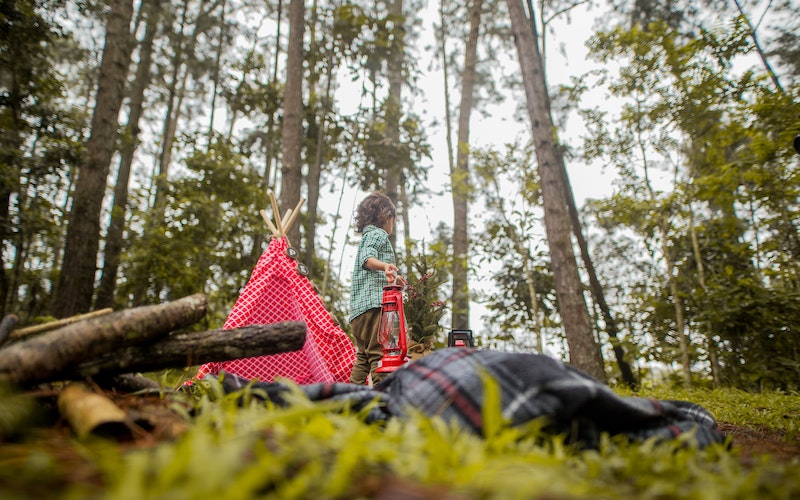
Dry Camping vs Wet Camping
Have you heard the words dry camping and wondered what it was? What does it mean to dry camp vs wet camp and which is better?
Dry camping, also known as boondocking, involves setting up your camp in a location without amenities such as water, electricity, or sewer systems. Contrastingly, wet camping refers to camping in spots where these amenities are readily available.
Each approach has its unique pros and cons, and the choice often depends on the individual’s preferences and camping goals. Let’s delve deeper to understand more about these two camping styles.
What is considered dry camping?
Boondocking is essentially camping without the convenience of utilities like running water, electricity, or sewer facilities. It’s a form of camping where you’re on your own, relying on what you can carry with you.
This means that you need to be prepared with enough water, food, and other necessities for the duration of your stay. It’s a more rugged form of camping, often taking place in remote or off-grid locations.
Although some choose dry camping in a parking lot or even car camping.
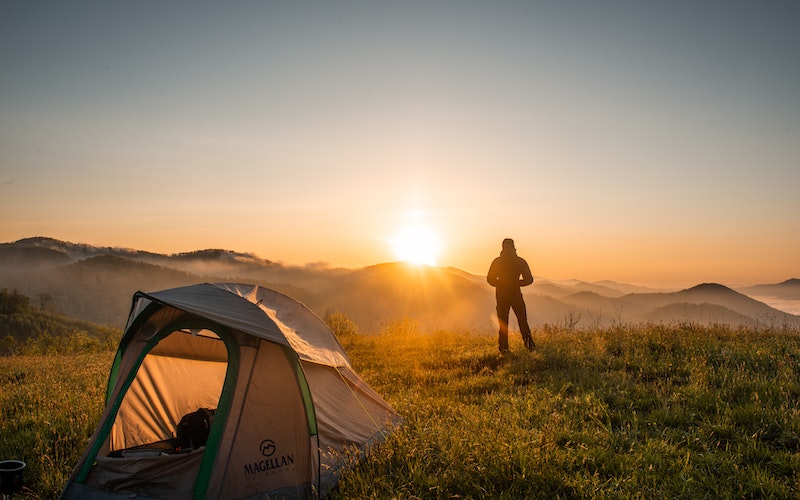
Benefits of Dry Camping
Dry camping offers several advantages that can make your camping experience more rewarding. First, it allows you to connect deeply with nature. Away from the noise and distractions of crowded campsites, you can enjoy tranquility and the beauty of your surroundings.
Second, this style of camping can be a more economical option, as many dry camping locations are free or less expensive than sites with amenities. Moreover, it can enhance your self-reliance skills, as you’ll need to manage resources carefully, plan your meals, and navigate without the help of modern conveniences.
Lastly, there’s a certain sense of adventure and accomplishment in thriving in the great outdoors with just the basics. Some national forests offer options for camping without hookups.
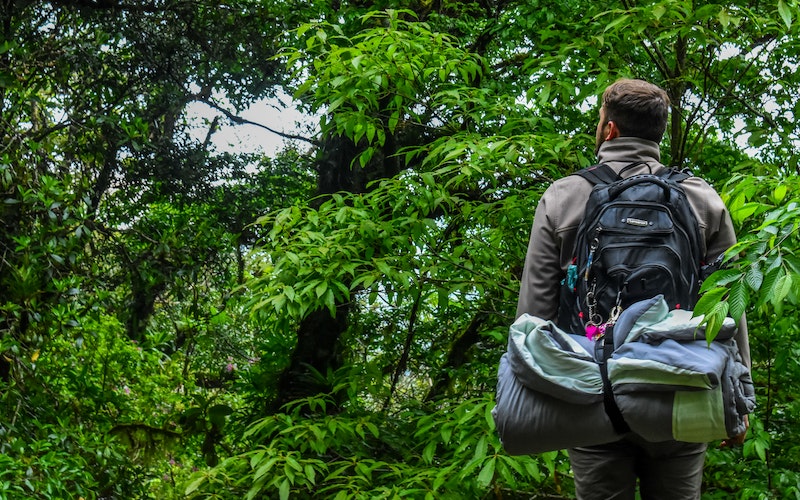
Challenges of Dry Camping
Despite its many benefits, dry camping also comes with its fair share of challenges. The first major challenge is the lack of utilities. Without access to running water, electricity, or sewer facilities, basic tasks such as cooking, cleaning, or even staying warm can become difficult. You need to plan and pack carefully to ensure you have enough water and food for your trip.
The second challenge is the remote location. While the solitude can be a significant advantage, it can also mean being far from medical aid or other emergency services. In case of an emergency, it could take longer for help to arrive.
The third challenge is trash management. In established campgrounds, there are usually designated waste disposal facilities. However, in this type of camping, you need to pack out all your trash, which requires careful planning and consideration.
Lastly, dry camping requires a certain level of outdoor skills and survival knowledge. From knowing how to start a fire to being aware of local wildlife, dry camping demands more than just a love for the outdoors. It’s a commitment to respect and care for nature while being prepared to face the inherent challenges of off-grid living.
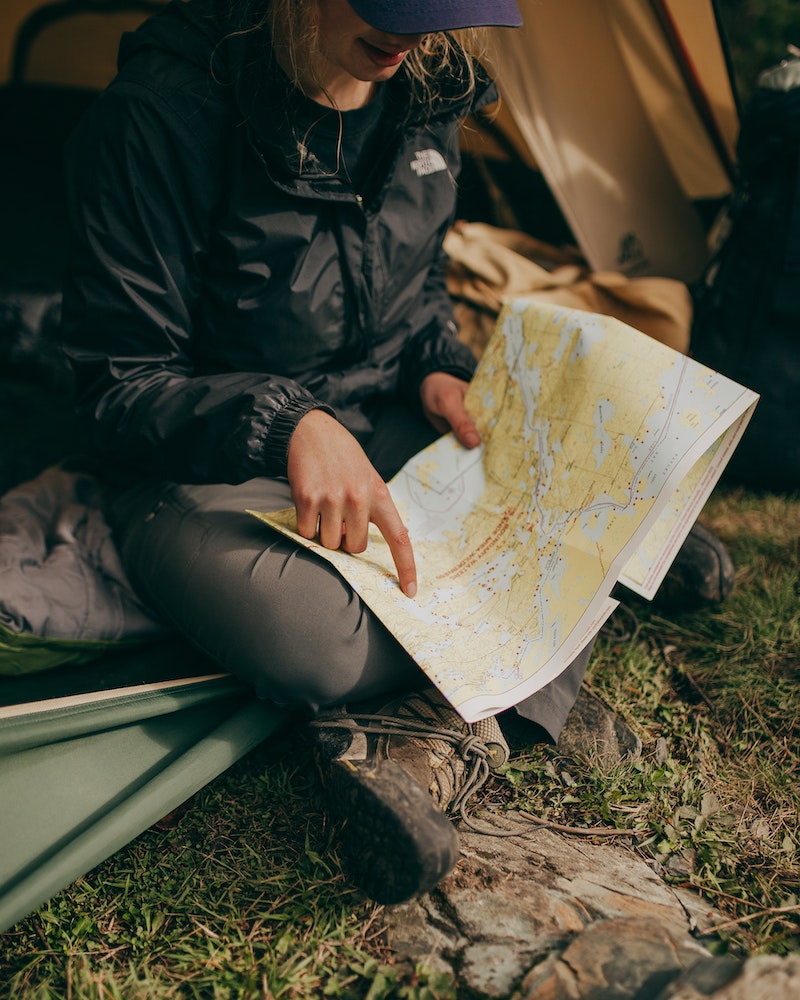
Tips for Successful Dry Camping
To enjoy a successful dry camping trip, consider the following tips:
Plan Ahead: Always plan your trip in advance. Know the weather conditions, terrain, and local wildlife in the area where you plan to camp.
Water Management: Carry enough water for drinking, cooking, and cleaning. Alternatively, have a way to purify natural water sources.
Energy Sources: Solar panels or a portable generator can provide the necessary power for your trip. Don’t forget batteries for your flashlights! Or, bring along solar power.
Waste Disposal: Pack biodegradable bags for trash. Remember, leave no trace behind.
Food Storage: Store food in air-tight containers to prevent attracting wildlife.
Emergency Kit: Always carry a first-aid kit, maps, and a compass for emergencies.
Remember, the key to successful dry camping is being self-sufficient and respectful of the environment.
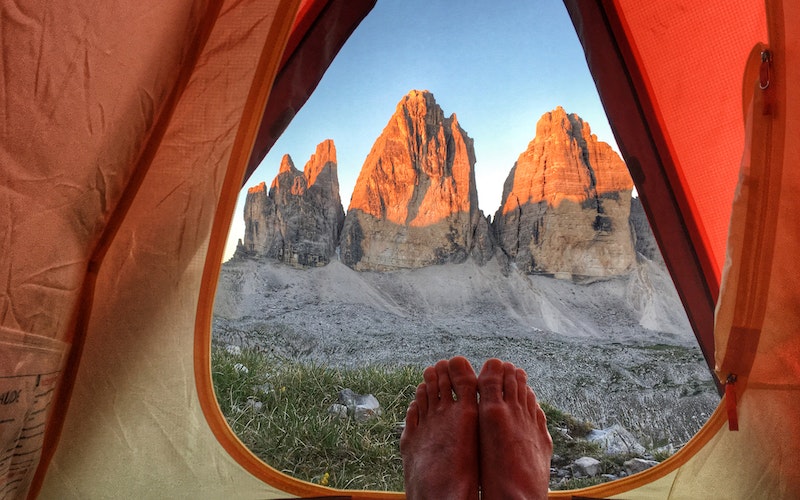
Is dry camping the same as Boondocking?
Yes, dry camping is often referred to as boondocking. This term is used predominantly in North America to describe camping that is off-grid or dispersed camping. Boondocking typically involves camping in remote locations, far from populated areas and usual amenities. It’s often called wild camping.
The term originated from the phrase “boonies,” which refers to open, wild, and undeveloped areas.
Therefore, when you’re boondocking, you’re essentially venturing into the ‘boonies’ and setting up camp.
You will be in the middle of nowhere without hookups rather than an established campground.
Is dry camping the same as tent camping?
Not necessarily. Dry camping refers to camping without access to utilities like water, electricity, or sewer systems, regardless of the type of shelter used. You can dry camp in a recreational vehicle (RV), a camper van, or a tent.
Conversely, tent camping refers to camping in a tent, which can be done in a variety of settings, including both dry camping locations and campsites with amenities (wet camping). So, while you can dry camp while tent camping, the two terms are not synonymous and refer to different aspects of the camping experience.
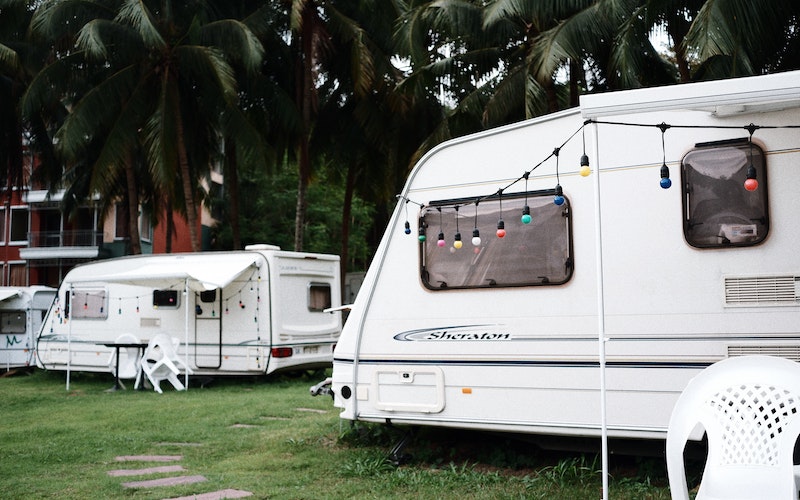
Dry camping in an RV
Dry camping in an RV is a unique experience that blends comfort with a sense of adventure. However, it’s important to note that not all RVs are equipped for dry camping, and modifications might be needed.
You’ll have to rely on your RV’s fresh water tank, propane tank, and battery power to sustain you through the trip, so careful planning and management of resources is essential. Remember, the larger your RV, the more challenging it might be to navigate remote locations.
Selecting an RV appropriate for the terrain and your camping needs can significantly enhance your dry camping experience. Dry camping in an RV offers an opportunity to enjoy the great outdoors without completely letting go of the comforts of home. RV camping trips on public land can be a nice middle ground.
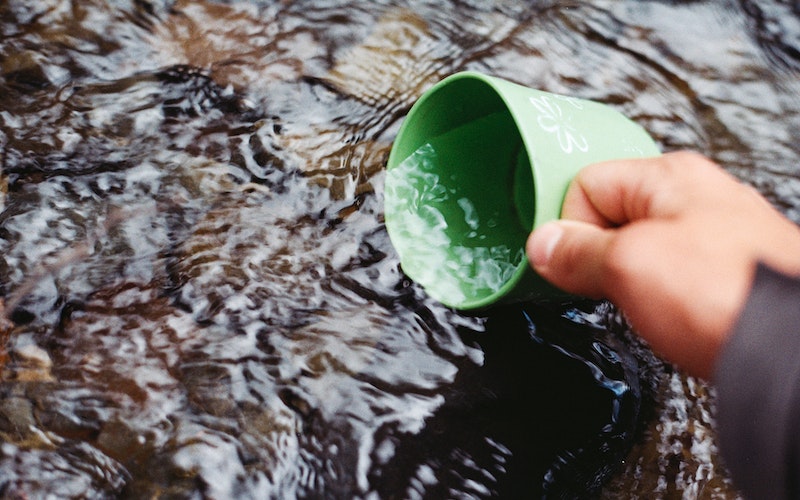
How to conserve water when dry camping
Conserving water when dry camping is essential as you only have a limited supply. Here are a few simple methods to help you achieve this:
Use Less Water for Dishwashing: Instead of rinsing dishes under running water, use a spray bottle to mist them. Wipe them clean with a cloth or sponge. You will want to use as few dishes as possible to avoid washing dishes.
Reuse Cooking Water: If you’ve boiled vegetables or eggs, let the water cool and use it for cleaning or even washing yourself. Another option is to eat food cold.
Skip Showers: Consider skipping showers on short trips. If you must freshen up, use wet wipes or a sponge bath. This is the easiest way to save water if you don’t have a fresh water tank.
Collect Rainwater: If it rains, take the opportunity to collect some natural water. Make sure to purify it before drinking.
Remember, every drop counts when you’re dry camping without hookups.
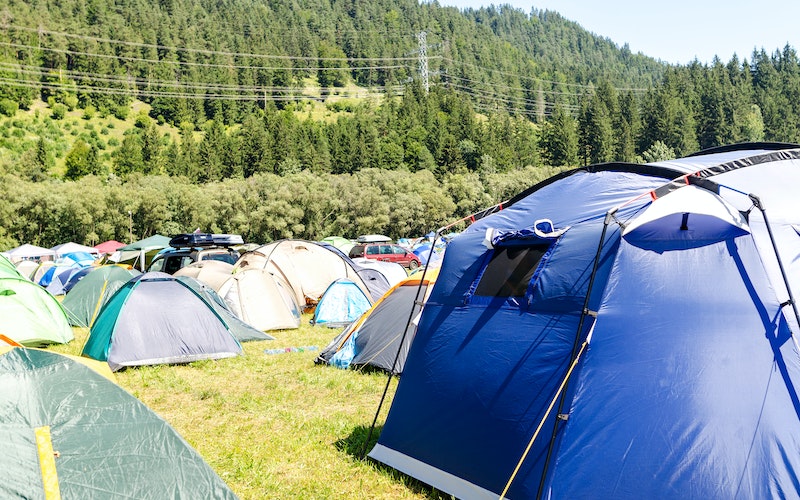
What is Wet Camping?
Wet camping, to put it simply, refers to camping at sites where basic amenities such as water, electricity, and sewer systems are available. These campgrounds often have facilities like restrooms, showers, and sometimes even laundry rooms or communal kitchens.
The term “wet” signifies the availability of running water at these sites. Wet camping sites are typically located within established campgrounds and cater to those who prefer a bit more comfort and convenience during their outdoor adventures.
Some people choose to wet camp in a Walmart parking lot to save money. There are limited amenities but at least there are public restrooms.
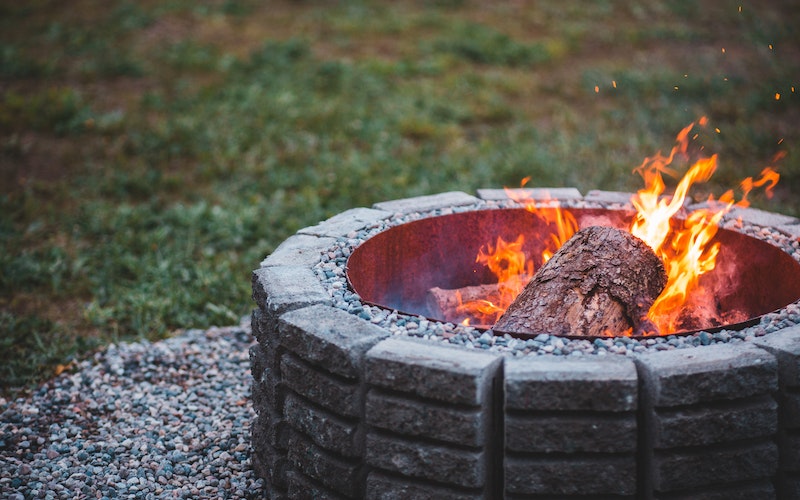
Advantages of Wet Camping
Wet camping offers a variety of benefits, particularly for those who enjoy the outdoors but also appreciate certain creature comforts. First, the level of comfort is higher in wet camping because of the available amenities, such as running water, electricity, and sewer systems. This means you can take showers, cook using electric appliances, and dispose of waste more conveniently.
Second, wet camping typically takes place in established campgrounds that may offer additional facilities like restrooms, laundry rooms, or communal kitchens. This can add an extra layer of convenience to your camping experience.
Third, these locations often have designated areas for tents or RVs, picnic tables, and fire pits, making your stay more structured and comfortable.
Lastly, because wet camping sites are usually within established campgrounds, they are often closer to emergency services, offering an added layer of safety during your outdoor adventure. Therefore, wet camping can be an excellent choice for families with young children, first-time campers, or those who prefer a blend of nature and comfort in their camping experience.
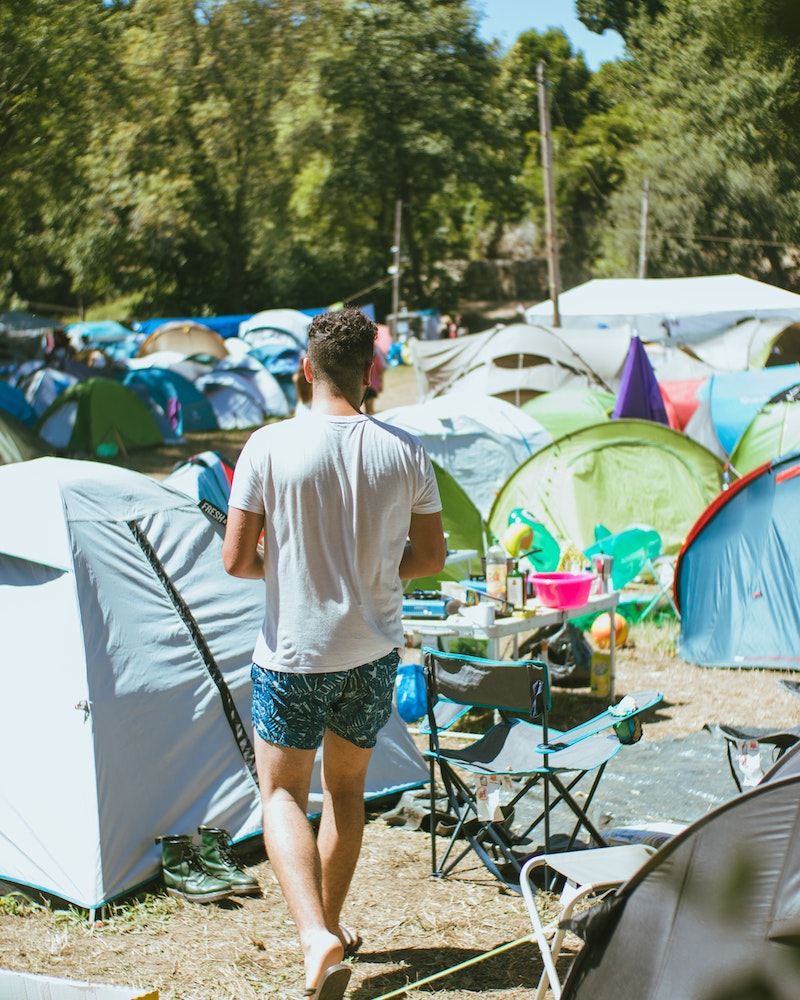
Challenges of Wet Camping
Despite the conveniences it offers, wet camping also presents several challenges. Firstly, these sites can be crowded, reducing the sense of solitude and tranquility that many seek in nature. With the presence of more people, noise levels can be high, impacting your overall camping experience.
Secondly, the convenience of amenities may result in higher expenses as these sites typically impose fees for their use. Thirdly, because these sites are well-established, they often have strict rules and regulations.
This could include restrictions on campfires, pets, or even the time you can enter or leave the campsite.
Lastly, the easy availability of amenities might limit the opportunity to develop self-reliance skills that are often honed during more rugged camping experiences.
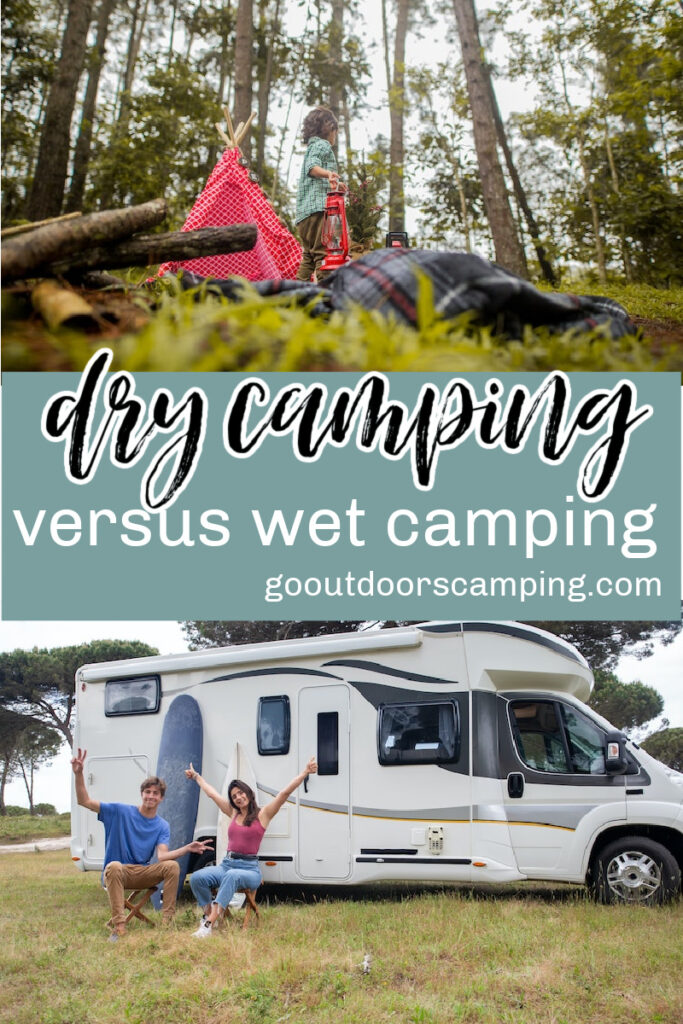
Tips for successful wet camping
To make the most of your wet camping experience, here are some tips for camping in designated campsites and camping areas with hookups:
Reservations: Popular sites can fill up quickly, especially during peak camping seasons. Make sure to reserve your spot in advance.
Respect Rules: Adhere to the campground’s rules and regulations. This includes restrictions on noise, pets, and fire safety.
Pack Accordingly: With access to amenities, you may choose to bring additional items for comfort, such as electrical appliances or extra bedding.
Consider Costs: Wet campgrounds often charge fees for site rental and the use of amenities. Factor these costs into your camping budget.
Stay Considerate: As these sites are often more crowded, maintain a considerate noise level and respect the privacy of others.
Remember, wet camping aims to strike a balance between experiencing nature and enjoying some creature comforts. Plan wisely to ensure a memorable and enjoyable experience.

What is stealth camping?
Stealth camping, in basic terms, refers to the practice of setting up camp in a discrete or covert manner, often in areas where camping is not explicitly permitted. This form of camping typically involves arriving late, leaving early, and leaving no trace to avoid drawing attention.
It’s commonly practiced by long-distance cyclists, hikers, and budget travelers. While it can certainly add an element of adventure to your travels, it’s important to respect local regulations and private property.
How to keep your RV battery charged
When dry camping, ensuring your RV battery stays charged is critical. Here are some straightforward steps to keep it powered:
Conserve Energy: Use your electrical items sparingly to preserve battery power.
Use Solar Panels: Harness the power of the sun to recharge your battery, a sustainable and cost-effective method.
Generator: A portable generator can supply electricity, but check the noise level to avoid disturbing others.
Engine Charging: Your RV’s engine can charge the battery, but only run it as necessary; excessive idling can be wasteful.
Remember, proper maintenance and sensible use can prolong your battery’s life and efficiency.
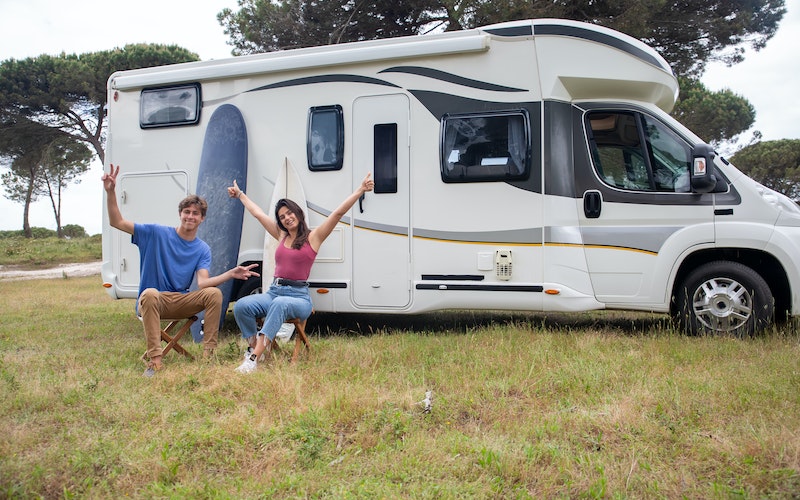
How to prepare your RV for dry camping
Preparing your RV for dry camping involves careful planning and prioritizing essential resources. Here are some simple tips:
Water Conservation: Ensure your water tanks are full. Carry additional water jugs if possible. Plan for minimal water usage. It’s important to conserve your precious fresh water.
Power Management: Fully charge your RV battery. If you’re using solar panels or a generator, ensure they’re in working condition.
Waste Handling: Empty your waste tanks before you leave. Carry waste disposal bags for emergencies.
Food Storage: Stock up on non-perishable food items that don’t require much cooking or water.
Fuel: Fill up your fuel tanks, considering your trip duration and distance.
Remember, the key to successful dry camping is preparation and resource conservation. Remember, you won’t be using sewer hookups. So, make sure you are prepared to dry camp.
Overnight dry camping
Overnight dry camping requires thoughtful planning to ensure a comfortable and safe experience. Here are some straightforward tips for your camping trip:
Choose the Right Spot: Select a location that is safe, flat, and preferably has some shade to keep your RV cool.
Be Mindful of Noise: Keep noise to a minimum especially after dark, respecting other campers and wildlife.
Safety Measures: Keep a first aid kit handy and be aware of the nearest emergency services.
Lighting: Carry sufficient battery or solar-powered lights for visibility after sunset.
Keep Warm: Depending on the season, it could get chilly at night, so be sure to pack adequate warm clothing and blankets.
Remember, the key to successful dry camping overnight is to respect nature, be considerate of others, and take steps to ensure your own comfort and safety.

Safety tools for dry camping
When embarking on a dry camping adventure, carrying the right safety tools is critical to ensure your well-being. Here are some essential items you should always have on hand:
First Aid Kit: A well-stocked first aid kit can handle minor injuries and help stabilize more serious situations until professional help arrives.
Fire Extinguisher: A compact, portable fire extinguisher can help control small fires and prevent them from spreading.
Flashlight: A battery-powered or rechargeable flashlight is essential for navigating in the dark. Consider a headlamp for hands-free use.
Multi-Tool: A multi-functional tool, including a knife, can assist in numerous situations, from opening canned food to cutting rope.
Emergency Whistle: Useful for signaling distress or alerting others to danger in a non-verbal way.
Above all, the key to safe dry camping is to be prepared, stay vigilant, and use common sense.
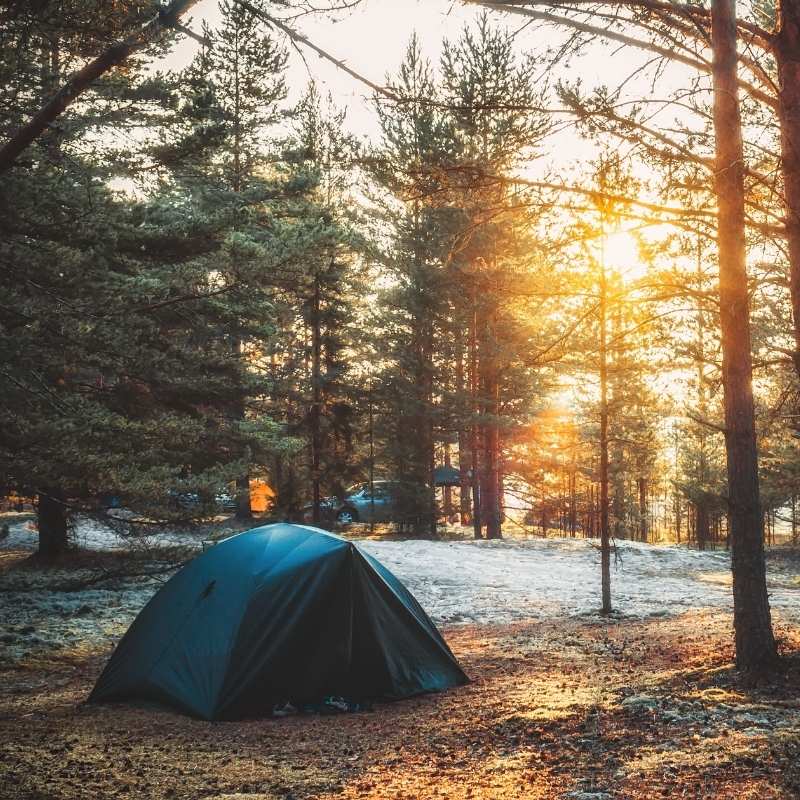
Dry camping safety tips
When it comes to dry camping, safety should not be compromised. Always remember the following basic tips:
Stay Alert: Pay attention to your surroundings. Watch out for potential hazards.
Check Weather: Always check the weather forecast before you head out. Be ready for sudden changes.
Plan Route: Plan your route in advance. Know the terrain and potential risks.
Contact Info: Always inform someone about your plans. Share your expected return date and camping location.
Stay Hydrated: Make sure to drink enough water, especially during hot weather.
Avoid Wildlife: Keep your food securely stored and your camp clean to avoid attracting wildlife.
Remember, safety comes first when enjoying the great outdoors.
Create a travel toiletry bag for dry camping
When embarking on a dry camping trip, it’s essential to pack a practical and efficient travel toiletry bag.
Start with the basics: toothbrush, toothpaste, and soap. Opt for biodegradable products to minimize your impact on the environment.
Don’t forget travel-sized shampoo, conditioner, and body wash, keeping in mind that water for bathing may be limited. Include a compact towel, tissues, and wet wipes for quick clean-ups. Toilet paper is a must, and again, opt for a biodegradable variety.
Lastly, pack a small mirror, a razor, and any other personal hygiene items you may need. Remember, the goal is to pack light but don’t compromise on personal cleanliness and hygiene.
Using a solar shower while boondocking
Using a solar shower during your boondocking adventure can be a highly efficient and environmentally friendly way to stay clean. These showers use the sun’s energy to heat water, making them perfect for dry camping.
To use one, you simply fill it up with water, leave it in the sun to warm up, and it’s ready to use. Always test the water temperature before use to avoid burns. Also, remember to use biodegradable soap and shampoo to minimize your environmental impact. Be sure to hang your solar shower at a comfortable height, ideally from a sturdy branch or your RV.
How to generate power when dry camping
Generating power while dry camping can seem daunting but it’s straightforward with a few key tools. The main methods include solar panels, wind turbines, and portable generators. Solar panels are a clean, sustainable way to harness power, especially in sunny climates.
Wind turbines can be effective if you’re camping in an area with consistent wind. Portable generators, while noisier and reliant on fuel, can provide a reliable source of power. Remember to use energy sparingly to conserve resources.
However, when you are considering dry camping vs wet camping, one of the big differences is camping without a power source.

Cooking while dry camping
Cooking while dry camping is a unique experience that requires careful planning and resourcefulness.
First, you’ll need to pack lightweight, non-perishable food items. Consider canned goods, dried fruits, nuts, and protein bars.
Remember to bring a portable cookstove and fuel. However, use this sparingly to conserve resources.
Also, always have a manual can opener at hand. Check out these no cook camping food ideas.
Lastly, clean-up is crucial. Use biodegradable soap for dishwashing and ensure you leave no trace behind.
Remember, the key to successful dry camping cooking is simplicity and respect for the environment.
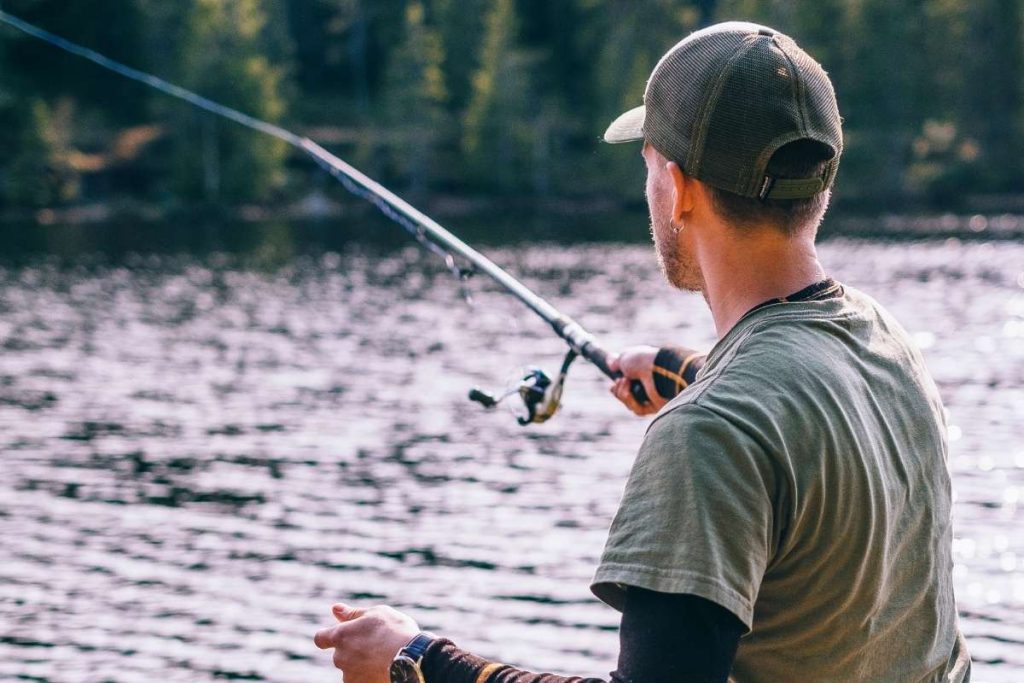
How to make boondocking fun
Boondocking can be a thrilling adventure with a dash of creativity and an open mind. Incorporate entertainment that naturally aligns with your outdoor environment.
Try activities like star-gazing, hiking, bird-watching, or fishing. Remember to bring a good book, board games, and a deck of cards for those cozy RV evenings.
Don’t forget to pack a camera to capture the delightful moments. Moreover, exploring the local flora and fauna can be an exciting educational experience.
Whether you are dry camping vs wet camping, remember, the key to making boondocking fun is to embrace the serenity of nature and enjoy the simple things.
Conclusion
In conclusion, dry camping or boondocking presents an unparalleled opportunity to connect with nature, escape the hustle and bustle of city life, and experience the simplicity and rawness of outdoor living.
However, it requires careful planning, awareness, and respect for the environment.
Essential safety tools, a well-stocked travel toiletry bag, sustainable power generation methods, and resourceful cooking techniques are all part of a successful dry camping experience.
Now that you know the difference between dry camping vs wet camping, remember, the key to a memorable boondocking trip lies in embracing the serenity of nature, being prepared, and leaving no trace behind. Enjoy the journey, respect nature, and create lasting memories.
Leave a Reply